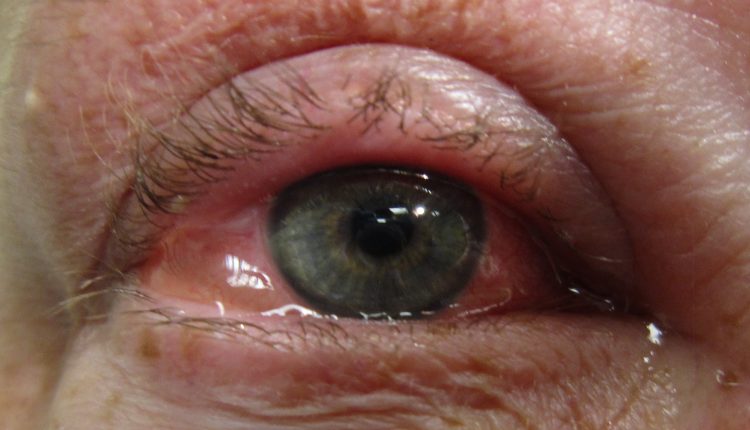
Allergic conjunctivitis: causes, symptoms and prevention
Allergic conjunctivitis is an inflammation of the conjunctiva, very common in this season, which triggers annoying symptoms such as redness, burning and itching
Pollen and grasses are not only responsible for hay fever and sneezing in this season.
Frequently, the eyes are also involved in allergic manifestations.
Eye redness, swelling of the eyelids, burning eyes and increased tearing are the most common symptoms of allergic conjunctivitis, an inflammation of the conjunctiva (the thin membrane that protects the eye from external influences), which is very common at this time of year.
The main risk factors for the onset of allergic conjunctivitis
Allergic conjunctivitis is triggered in predisposed individuals when the conjunctiva and eyelid come into contact with an irritant, or rather allergenic, substance.
In this season, plant pollen, poplar and grass pollen in particular are in the dock.
This type of conjunctivitis is characterised by redness and burning in both eyes and intense itching that also affects the eyelids.
Usually the person has already presented similar symptoms, perhaps in previous years during the same seasonal period, and there is often a family predisposition to allergic diseases.
This periodicity helps in better understanding the underlying causes of allergic conjunctivitis.
Allergic conjunctivitis is often complicated by the superimposition of a bacterial infection and thus the nocturnal secretion causes the eyelids to become ‘welded’ in the morning.
Allergic conjunctivitis: How to prevent the problem
The first, fundamental rule that applies to defend oneself against all forms of allergy is not to come into contact with the substance that causes the allergy.
Often this is not possible and therefore various “tricks” are used:
- Sunglasses: they help reduce symptoms for two reasons:
-They offer a protective shield against the external environment;
-they “cut out” ultraviolet radiation, one of the main allergens for the conjunctiva; - hats with visors: useful for the same reasons as sunglasses, they are very popular in Anglo-Saxon countries, but less so in Italy;
- frequent washing of the eye contour (or eyelid washing): mechanically removes dust and pollen, at the same time refreshes the eyelid skin and induces an improvement in tear secretion; the tear film is the first barrier, and perhaps the most effective, that the conjunctiva and cornea use against pathogens and allergens.
How to use eye drops to treat allergic conjunctivitis
If there is secretion, therapy begins with an antibiotic-cortisonic eye drop or drops, used for a few days, on the advice of the specialist.
Treatment continues with antihistamine eye drops, which, as they have no cortisone component, can (and should) be instilled for a long time.
In the most persistent cases, an allergy specialist should also be consulted, who can modulate a general antihistamine therapy.
The eye drops should be used as follows: sitting with the head back, one to two drops of eye drops are instilled into the conjunctival sac, lowering the lower eyelid with a finger.
Afterwards it is advisable to sit for a minute, still with the head back, but with the eyes closed, so that the preparation spreads adequately over the conjunctiva and cornea.
Warning: eye drops instilled with the eyes open, and perhaps standing up immediately afterwards, are of very little use.
It is in any case advisable to have a specialist eye examination within a few days of the onset of symptoms in order to identify the most suitable treatment.
While waiting for a specialist consultation, eye drops with a soothing and refreshing effect, such as those based on natural extracts (chamomile, eyebright, witch hazel and arnica), are useful.
Allergic conjunctivitis: when to worry?
If the complaints affect only one eye for several days, you should be alert.
The monolateral nature of the symptomatology is in fact a possible sign of:
- keratitis
- corneal abscesses;
- uveitis.
These are more serious manifestations than conjunctivitis and must be treated with appropriate therapies that differ from those used for conjunctivitis.
Read Also:
Adverse Drug Reactions: What They Are And How To Manage Adverse Effects
Symptoms And Remedies Of Allergic Rhinitis



